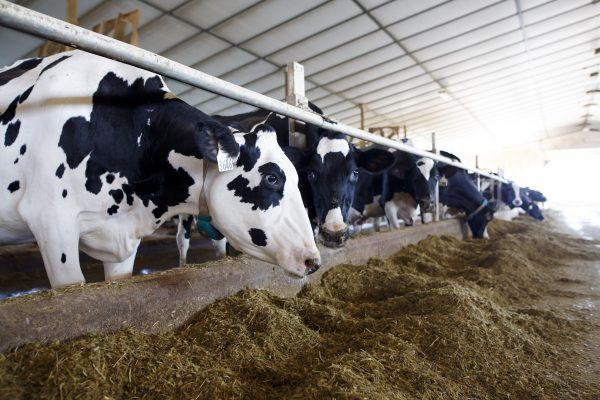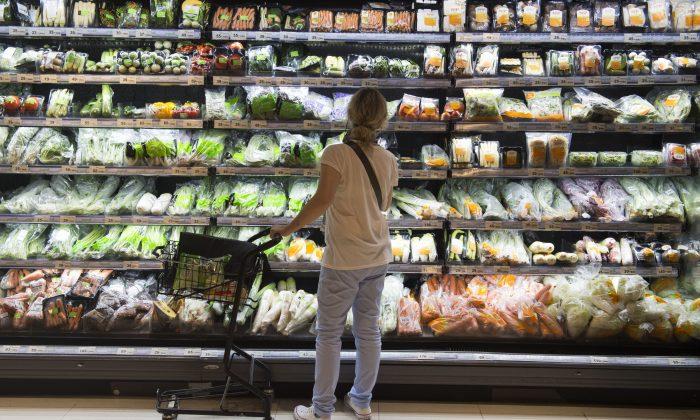Some say the current spat between the Liberals and Conservatives about the updated Canada Food Guide is distracting from the real issues ahead of the election, while others note that the guide—the second-most downloaded government document after tax forms—is crucial in directing healthy eating for Canadians.
The alleged declaration of “war” on the new food guide, as Prime Minister Justin Trudeau calls it, all started with Conservative Party leader Andrew Scheer fielding a question by a dairy producer at a Dairy Farmers of Canada meeting on July 17.
Asked about his take on the government’s food policy, Scheer said the latest revision of the guide released in January is “ideologically driven” and influenced by people who have a “bias against certain types of healthy food products.” He promised to review the guide if elected prime minister.
Senior Liberal cabinet ministers, as well as Trudeau himself, weighed in on the issue, saying the guide is based on sound science by experts and free of biased influence, while seizing the opportunity to paint the Tories as the party that doesn’t follow science.
The new guide does away with traditional food groups and has a lower emphasis on the consumption of meat and dairy compared to the previous guides, encouraging consumption of plant-based protein and recommending water as the “beverage of choice.”
For both sides, supporting dairy farmers is an important consideration. For the Liberals, maintaining supply management was a key principle in NAFTA renegotiations, which became a contentious issue with the United States during the talks. But it may be even more so for Scheer, who—despite the scheme being protectionist and against free market principles—is a staunch supporter of supply management, with some saying his support is what helped him snatch away Party leadership from rival Maxime Bernier, who believes the scheme should end.
“For someone like Scheer, who owes his leadership to the dairy farmers, it’s important that he speaks up,” said Sylvain Charlebois, a professor in food distribution and policy at Dalhousie University.
But he adds that what he thinks Scheer really means by his remarks on the food guide is that there needs to be a comprehensive approach to the guide, and that’s what’s missing.
The food guide has received positive feedback from many dieticians and health professionals. Dietitians of Canada said recently on its Twitter feed that the new guide is “most definitely based on science,” praising it for its promotion of consumption of vegetables, fruits, whole grains, and protein foods.
But Charlebois said the food guide is missing input from some of the other sciences, including economics, history, and sociology.
“The narrative is controlled by certain health professions, and although they are very competent in their fields, I’m just not convinced that it makes the whole scientific process complete,” he said.

For example, the new guide suggests Canadians eat higher portions of fruits and vegetables, but the reality is that it may not be affordable for many to buy the required amount given rising produce costs, he said.
A joint study done by Dalhousie University and the University of Guelph released in March showed that 52 percent of consumers say they face barriers in adopting the guide’s recommendations. The majority cited affordability as the main cause, while others cited taste preferences, lack of time to follow the guide, and lack of availability, among other reasons.
“If people can’t afford to follow the food guide, how good is it? And that’s why you need to appreciate the mechanics and the economics of the entire food system,” Charlebois said.
From an economic perspective, he adds, the food guide may indeed be discriminating against the dairy industry, as on the one hand the government is prescribing a certain level of output in its quota system, but then sending a different message about consumption in the guide.
Charlebois said while it’s important that the issue of the food guide doesn’t become politicized, Canada needs to change its approach to food policy, as it can’t continue adopting diverging approaches in different streams.
“You have a two-headed government right now,” he said. “On the one hand you have Health Canada telling Canadians to eat what’s right, what’s good for them, but on the other hand you have the government supporting policies which entice producers to produce things we don’t necessarily need anymore.”






Friends Read Free